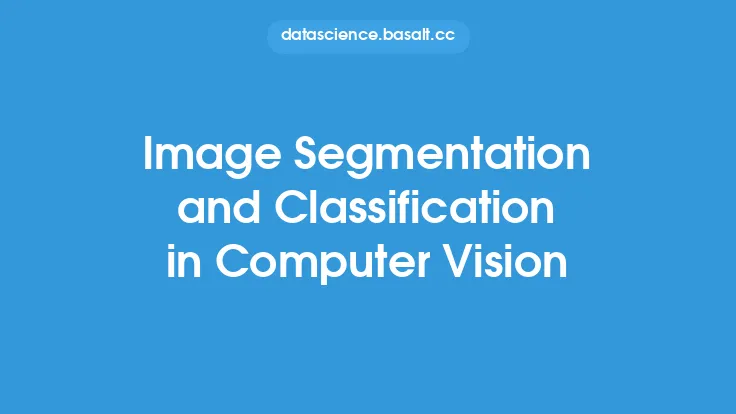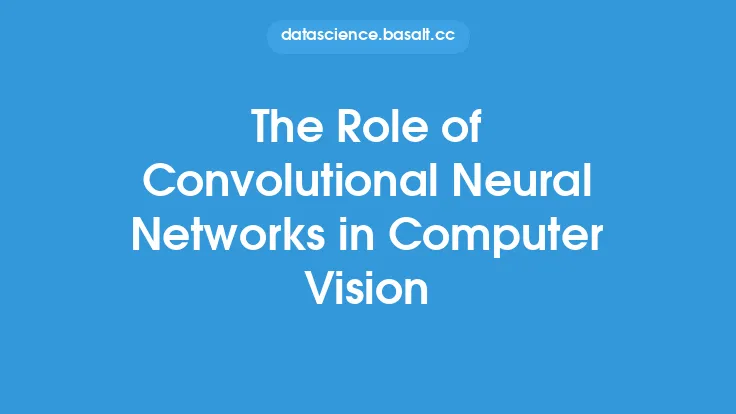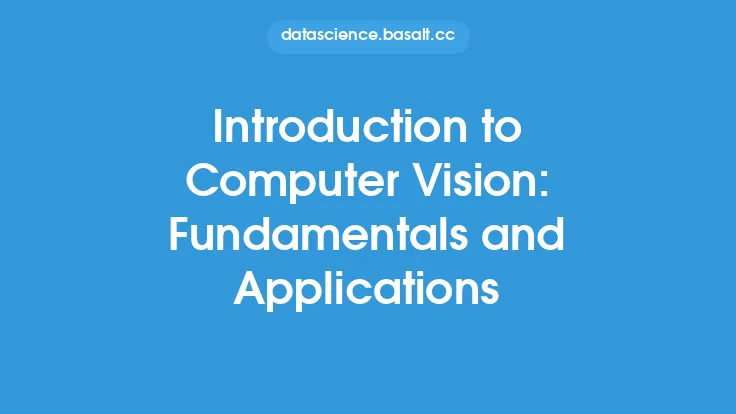Image processing is a crucial aspect of computer vision, as it enables machines to interpret and understand visual data from the world. The goal of image processing is to enhance, transform, or extract information from images, which can then be used for various applications such as object recognition, image classification, and scene understanding. In this article, we will delve into the fundamentals of image processing techniques in computer vision, exploring the various methods and algorithms used to manipulate and analyze images.
Introduction to Image Processing
Image processing involves a series of steps that transform an input image into a more suitable form for analysis or processing. The first step is image acquisition, where the image is captured using a camera or other imaging device. The acquired image is then pre-processed to enhance its quality, remove noise, and correct for any distortions. Pre-processing techniques include image filtering, thresholding, and normalization. Image filtering, for example, can be used to remove noise or blur from an image, while thresholding can be used to separate objects from the background.
Image Enhancement Techniques
Image enhancement techniques are used to improve the quality of an image, making it more suitable for analysis or processing. These techniques can be used to correct for issues such as low contrast, noise, or blur. One common image enhancement technique is histogram equalization, which adjusts the contrast of an image by modifying the pixel values. Another technique is image sharpening, which uses filters to enhance the details of an image. Image sharpening can be used to improve the visibility of edges and textures, making it easier to analyze the image.
Image Transformation Techniques
Image transformation techniques are used to change the representation of an image, making it more suitable for analysis or processing. These techniques can be used to rotate, scale, or translate an image. One common image transformation technique is the Fourier transform, which represents an image in the frequency domain. The Fourier transform can be used to analyze the frequency components of an image, making it easier to identify patterns or features. Another technique is the wavelet transform, which represents an image in the time-frequency domain. The wavelet transform can be used to analyze the spatial and frequency components of an image, making it easier to identify textures or edges.
Feature Extraction Techniques
Feature extraction techniques are used to extract relevant information from an image, making it easier to analyze or process. These techniques can be used to extract features such as edges, lines, or shapes. One common feature extraction technique is edge detection, which uses filters to identify the edges of an image. Edge detection can be used to identify the boundaries of objects, making it easier to analyze the image. Another technique is line detection, which uses algorithms to identify the lines of an image. Line detection can be used to identify the shapes or structures of an image, making it easier to analyze the image.
Image Restoration Techniques
Image restoration techniques are used to reconstruct an image that has been degraded or distorted. These techniques can be used to remove noise, blur, or other distortions from an image. One common image restoration technique is image de-noising, which uses filters to remove noise from an image. Image de-noising can be used to improve the quality of an image, making it easier to analyze or process. Another technique is image de-blurring, which uses algorithms to remove blur from an image. Image de-blurring can be used to improve the visibility of details, making it easier to analyze the image.
Morphological Image Processing
Morphological image processing is a technique used to analyze and process images based on their shape and structure. This technique uses mathematical morphology to extract features from an image, making it easier to analyze or process. One common morphological image processing technique is erosion, which uses a structuring element to remove pixels from an image. Erosion can be used to remove noise or small objects from an image, making it easier to analyze the image. Another technique is dilation, which uses a structuring element to add pixels to an image. Dilation can be used to fill in gaps or holes in an image, making it easier to analyze the image.
Color Image Processing
Color image processing is a technique used to analyze and process color images. This technique uses color models such as RGB or HSV to represent the color information of an image. One common color image processing technique is color thresholding, which uses color information to separate objects from the background. Color thresholding can be used to identify objects based on their color, making it easier to analyze the image. Another technique is color segmentation, which uses color information to segment an image into different regions. Color segmentation can be used to identify the different components of an image, making it easier to analyze the image.
Applications of Image Processing
Image processing has a wide range of applications in computer vision, including object recognition, image classification, and scene understanding. Image processing can be used to improve the accuracy of object recognition algorithms, making it easier to identify objects in an image. Image processing can also be used to improve the accuracy of image classification algorithms, making it easier to classify images into different categories. Additionally, image processing can be used to improve the accuracy of scene understanding algorithms, making it easier to analyze and understand the content of an image.
Conclusion
In conclusion, image processing is a crucial aspect of computer vision, enabling machines to interpret and understand visual data from the world. The various image processing techniques, including image enhancement, transformation, feature extraction, restoration, morphological processing, and color processing, can be used to improve the quality and accuracy of image analysis. By understanding these techniques, developers and researchers can create more accurate and efficient computer vision algorithms, enabling a wide range of applications in fields such as robotics, healthcare, and security. As computer vision continues to evolve, the importance of image processing will only continue to grow, making it an essential area of study for anyone interested in this field.





